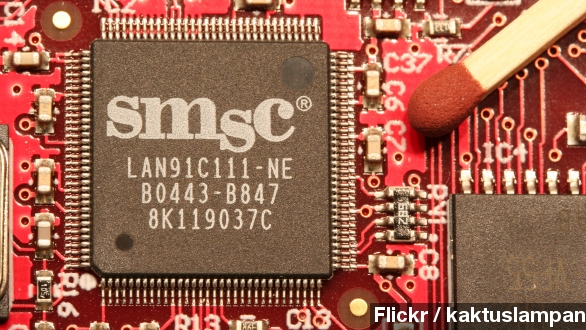Self-destructing messages are quite common in the movies, but in the real world not so much.
However, If DARPA — the agency behind the infamous BigDog robot — has its way, the U.S. military could be implementing self-destructing electronics, and it's all thanks to IBM. (Via YouTube / DARPA)
In January 2013, DARPA put out the call for teams to develop Vanishing Programmable Resources, or VAPR. VAPR are "electronic systems capable of physically disappearing in a controlled, triggerable manner."
The research agency was looking for a way to destroy — or at least disable — electronics placed or left on the battlefield, as this would keep potentially valuable information out of enemy hands.
IBM answered the call, detailing a way to completely obliterate a silicon chip, thus rendering the device useless. ZDNet reports the system uses a radio-frequency trigger for activation.
The company explained its idea in the contract, writing: "IBM plans is to utilize the property of strained glass substrates to shatter as the driving force to reduce attached CMOS chips into ... powder. A trigger, such as a fuse or a reactive metal layer will be used to initiate shattering." (Via Federal Business Opportunities)
And a writer for Ars Technica gives us a real-world example of when this technology could come in handy. "It would prevent scenarios like the transfer of technology found in the helicopter abandoned during the SEAL Team strike on Osama Bin Laden’s compound in Pakistan."
DARPA awarded IBM a $3.4 million contract to develop the self-destructing system.
And as for the broader VAPR initiative — the BBC reports it includes a wide swath of self-destructing tech. DARPA has actually awarded contracts to several companies.
Honeywell is working on electronics that would begin to decompose naturally after completing certain tasks, and Xerox is developing materials that disintegrate after receiving an electronic signal.


